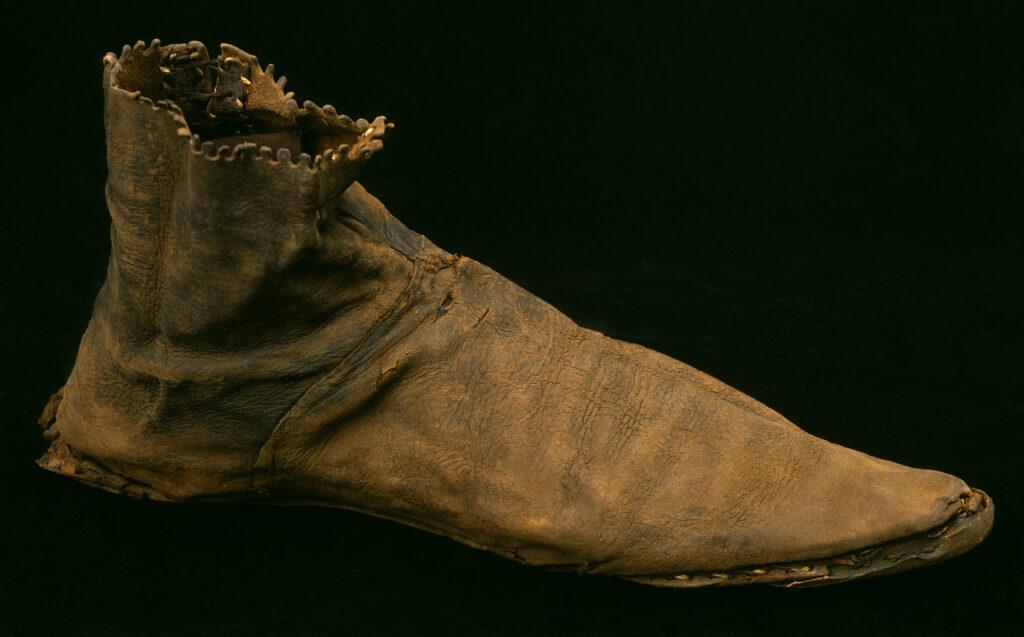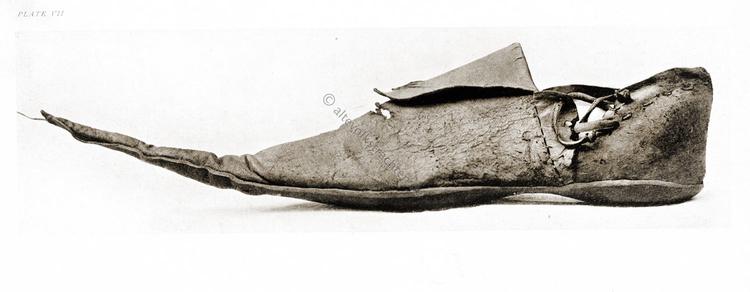

How already medieval people with pointed shoes ruined their toes
- By sennenqshop/li>
- 927
- 21/05/2022
Info
©st.museum-digital.de
freizeit Mode & Beauty06/18/2021British researchers report an unhealthy fashion trend triggered by lace beak shoes already in the 14th century.
The 14th century was a dream period for Fashionista: a plethora of new clothing and shoe models entered. Until a trend sharpened in the truest sense of the word. This culminated in the so-called beak shoes, also called Poulaines. "the remains of shoes excavated in London and Cambridge indicate that in the late 14th century almost every type of shoe was at least slightly pointed," says Piers Mitchell of the University of Cambridge. The result: foot misalignment.
Anyway, that was supposed to be. Now a British research team wanted to know exactly and explored the question of how widespread bale marriages were among the medieval inhabitants of the city of Cambridge. They examined findings of foot bones from a total of 177 adults of different levels, who had been buried in tombs of the city and its surrounding area from the 11th to the 15th century.
Hallux valgus
The evaluations showed: only six percent of the dead showed signs of hallux valgus (malalignment of the big toe, where it tends to the other toes excessively). In contrast, 27 per cent of the people of the 14th and 15th centuries were affected by bale toes on average. It also became apparent that compared to the inhabitants of the country, the wealthy citizens and also the clergy were more affected by the misalignment of the large toe. "it is amazing how many suffered from bale toes at the time," says first author Jenna Dittmar of the University of Cambridge.

Law against too long peak
How do they explain this? & quot; in the 13th and 14th centuries, it became increasingly common for members of clerical orders in Britain to wear elegant clothes, & quot; says Mitchell. The sharpness of the shoes took on such absurd forms that King Edward IV was prompted to intervene in 1463: he limited the maximum length of the shoe tips to five centimetres.
Further interesting findings of the examined skeletons: the persons with hallux valgus also showed conspicuously frequently signs of fractures on the upper limbs, which are typically the result of falls in which the affected persons fell forward to the arms. As the researchers explain, this could have been a consequence of the misalignment of the large toe and thus a consequence of shoe fashion: "modern clinical research on patients with hallux valgus has shown that the malposition of the large toe makes it difficult for those affected to maintain balance and thereby increase the risk of falls," says Dittmar.
Jederzeit und überall top-Informiert
Secure unrestricted access to all courier & APOs; s digital content: plus content, ePaper, online magazines and more. Test courier digital subscription now.
(kurier.at) | Status: 06 / 18 / 2021, 20: 06
